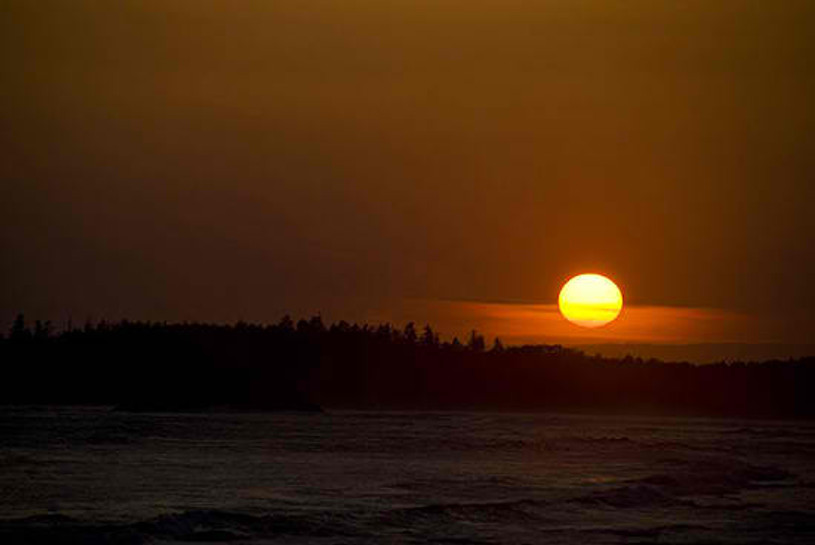As we move into May the days are getting longer and much to our delight a bit warmer which makes getting out and taking photos that much easier and enjoyable. That being said, it is a great time to take advantage of the golden hour; the first and last hour of the day when the sun is at its softest. Sunsets and sunrises, and getting great images of the beautiful scenes they create can be done with little difficulty.

Be Prepared – Arrive to your location early and give yourself some time to scout the area. Look for objects that would make interesting silhouettes in the foreground and try to find the angle you want to photograph the sunset from. You can also illuminate your foreground objects (or people) with a flash to create an image with a clear foreground and a natural sunset in the background. It does not take long for the sun to go down once it starts to set, so being prepared will help make sure you spend the majority of the time taking photos instead of looking for your shots. Decide if you want to show the sun in your photo, or if you want to focus on the colours of the sky. Don’t be discouraged to go out on a foggy or partially cloudy day, sometimes fog or clouds will enhance the look of the sunset by diffusing the light making the sun soft enough to photograph while still creating great colours.
Gear – You do not need anything aside from your camera for amazing sunset photos, but there are a few pieces of gear that will make getting the shot easier. The most important piece of gear to have aside from your camera would be a good tripod. When the light changes rapidly you may be fumbling to go from hand held to tripod. If you have your camera on a tripod already you will not only be able to bracket similar photos for HDR photos or composite photographs, but you will be ready for the changing light and will not miss photos from handshake or adjusting your gear. One other piece of equipment that would be beneficial is a cable release or wireless remote; this will help reduce camera shake from pressing the shutter and gets you away from the camera so you can take in your surroundings.
Get the Shot – There are many ways to take photos of a sunset, there is no right way or wrong way but there are a few things to remember that will help you get the photo you want. The focal length of the lens will determine the size of the sun or “solar disc” in your photo; the longer the focal length (i.e. 200mm) the larger the sun will appear in the photo while a wide angle lens will make the sun appear very small and distant. Since the light will change rapidly keeping your camera in aperture priority, shutter priority, or program mode will make it easy to compensate for the changing conditions and you will spend less time adjusting your settings. Chances are your camera will not get the perfect exposure for each photo; you can set up Auto Bracketing in your camera’s functions to help compensate for this. You can customize your Auto Bracketing settings for how many stops you want to compensate your exposure (+/-) and how many photos you want your camera to bracket. For example, your camera can be set to take three photos: the first is the exposure the camera has set, another photo that is a stop darker than the camera’s exposure and the final photo is a stop brighter than your camera’s exposure. The amount of photos and amount of compensation your camera allows varies from model to model.
White Balance -– Finally colour is extremely important to your sunset photos, but your camera may have a different idea of what the colours you see should look like. Take your camera out of Auto White Balance mode and try setting the white balance to the “shade” or “cloudy” setting. This will warm up the colours in your photo giving you those rich warm tones.
Taking sunset photos can be very simple, and hopefully these tips will help make creating images a little easier for you. The biggest piece of advice as repeated by photographers synonymously is to take lots of pictures. The more you take and experiment with your settings and composition, the more you will learn about your camera and your own personal photographic style.


